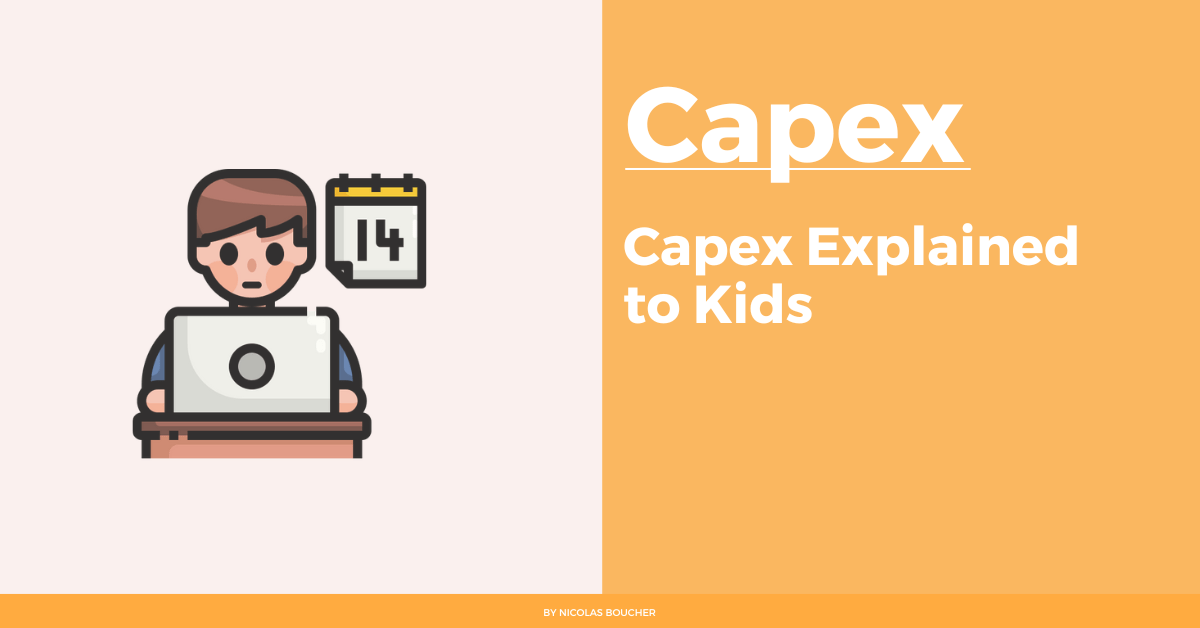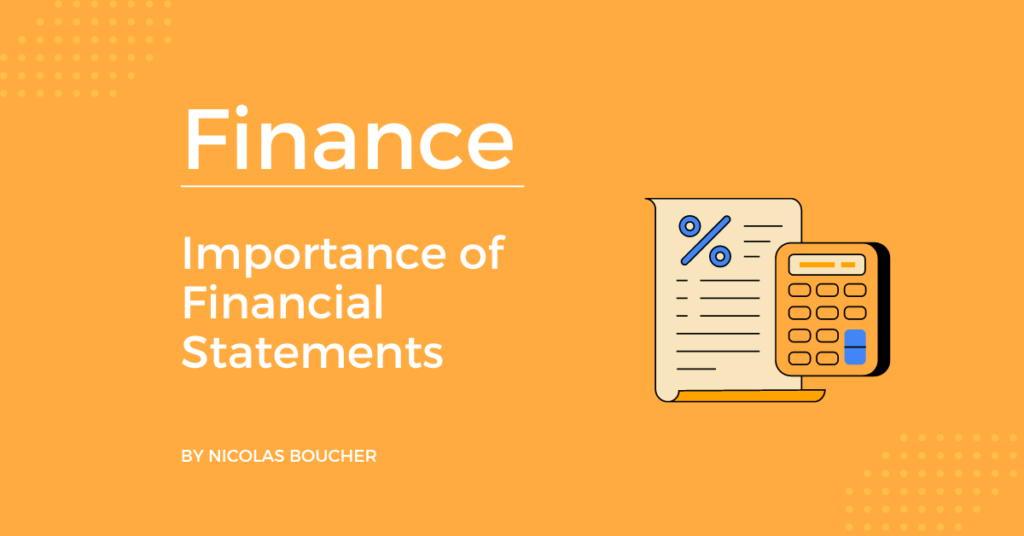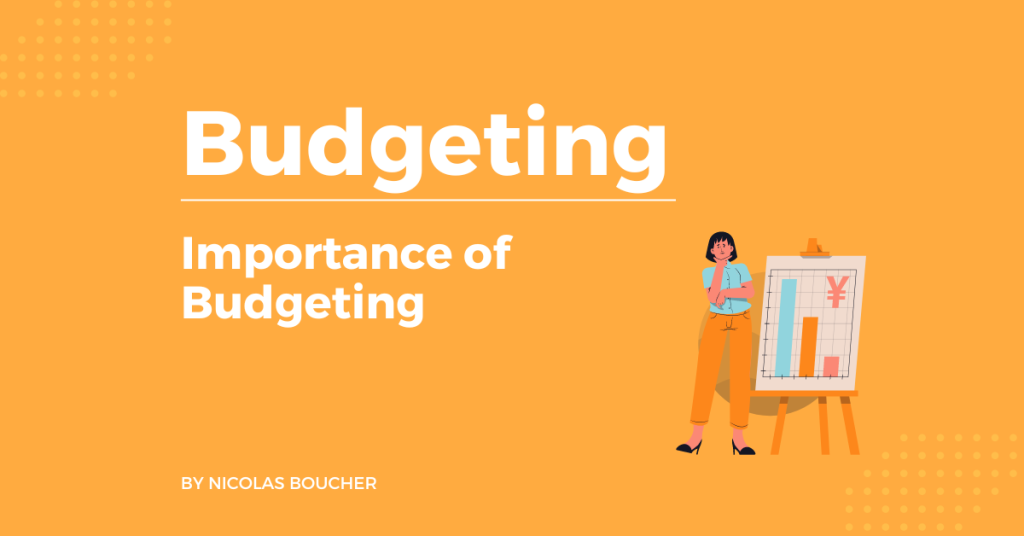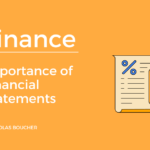Welcome, young learners, to an exciting journey into the world of business investments!
Today, we’ll dive into a fascinating concept called “Capex” and unravel its significance in the business realm.
Get ready to embark on an adventure that will help you understand how companies make important decisions regarding their future growth and development.
Table of Contents
What Is Capex?
Capex, short for “capital expenditure,” is a long-term investment made by businesses in assets such as equipment, property, and buildings.
Imagine a bakery investing $50,000 in a new commercial-grade oven to expand cookie production is an example of capital expenditure (CAPEX). This long-term investment aims to increase baking capacity, generate more revenue, and potentially boost profits.
Similarly, companies invest in Capex to acquire assets that will benefit their operations and contribute to their growth in the years to come.
How Is It Different from Opex?
To better grasp Capex, it’s important to differentiate it from another term you may have heard: Opex or operating expenditure.
Opex covers the day-to-day expenses that businesses incur to keep their operations running smoothly, such as salaries and rent.
In the world of cookies, for example, the electricity used in the kitchen is part of Opex. However, the oven itself, as a long-term asset, is categorized as Capex.
Why Is Capex Essential for Businesses?
Capex plays a vital role in helping businesses grow, improve their operations, and gain a competitive advantage in the marketplace.
Here’s why it’s so crucial:
- Fueling growth and improvement: Capex investments provide the foundation for businesses to expand and enhance their operations. Just as you invest time and effort in your hobbies or school projects, companies invest in Capex to facilitate their growth and achieve their long-term objectives.
- Increasing productivity and efficiency: By investing in new equipment, technology, or infrastructure, companies can boost their productivity and streamline their operations. Think of it as upgrading your lemonade stand to a larger table and more cups. With these investments, you’ll be able to serve more customers efficiently, leading to increased sales and profitability.
- Gaining a competitive advantage: In a competitive marketplace, businesses need to stay ahead of the game. Capex investments allow companies to adopt cutting-edge technologies and innovative solutions that give them a competitive edge. By constantly improving and staying relevant, businesses can attract more customers and strengthen their market position.
- Ensuring long-term success: Capex investments contribute to the long-term sustainability and success of businesses. By acquiring and maintaining essential assets, companies can minimize operational disruptions, reduce maintenance costs, and ensure a smooth workflow. This ultimately leads to higher customer satisfaction and loyalty.
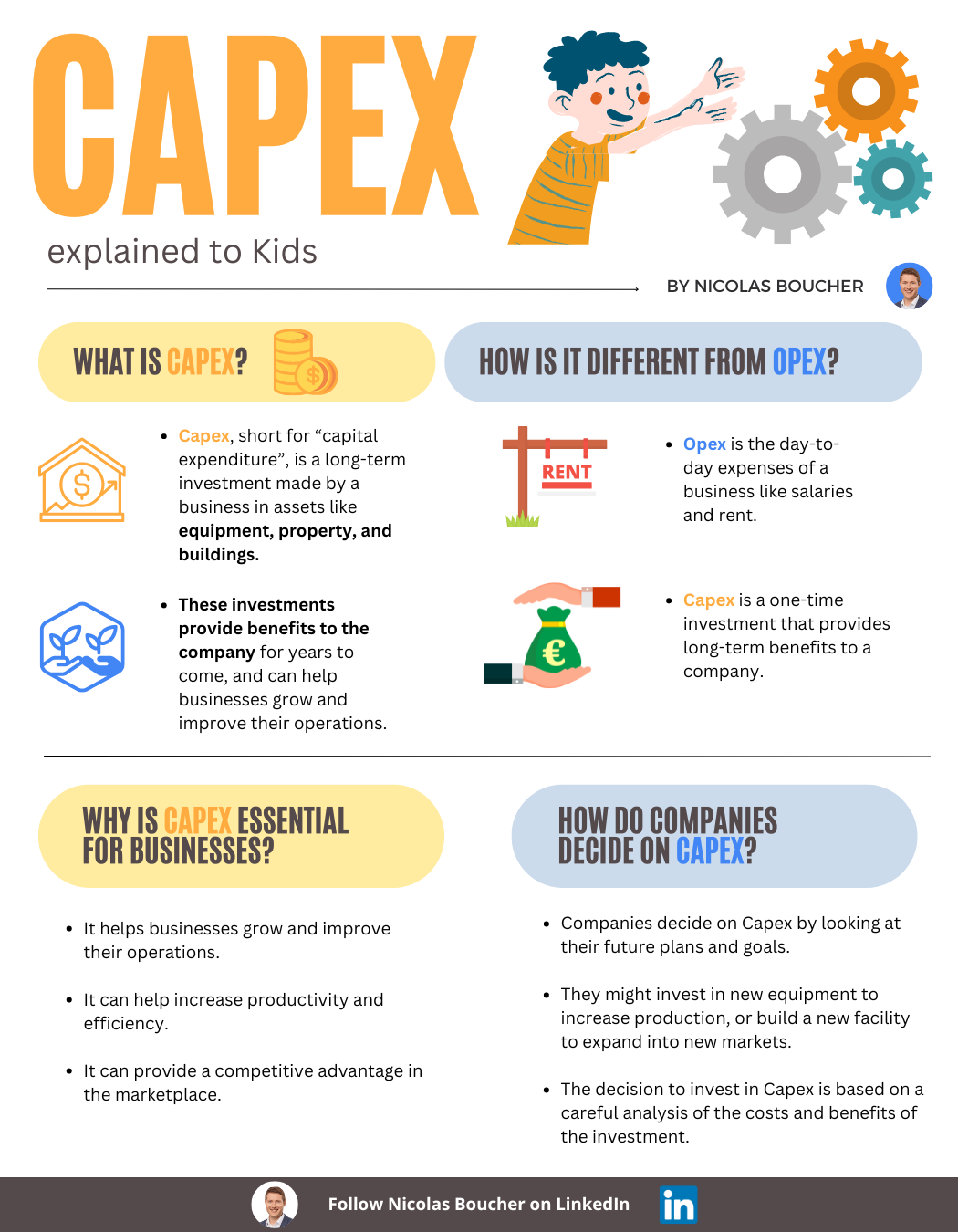
How Do Companies Decide on Capex?
Companies carefully analyze their future plans and goals when deciding on Capex investments. They consider various factors to ensure they make informed decisions.
Here’s a glimpse into their decision-making process:
- Assessing needs: Companies evaluate their current and future needs to identify areas where Capex investments are necessary. For instance, they may assess if they need to upgrade their machinery to increase production capacity or expand their facilities to enter new markets.
- Analyzing costs and benefits: Before making any Capex investment, companies conduct a thorough cost-benefit analysis. They assess the potential costs of acquiring and maintaining the assets, as well as the expected benefits over time. This analysis helps them determine if the investment aligns with their financial goals and growth strategy.
- Considering financial resources: Companies evaluate their financial resources to ensure they can afford the Capex investment. They assess their cash flow, profitability, and potential financing options to make an informed decision. Some companies may choose to seek external financing, such as loans, to fund their Capex projects.
Real-Time Example
Let’s bring it to life with a real-time example. Imagine you and your friends operating a successful lemonade stand.
Due to overwhelming demand, you decide to invest in a high-quality lemon juicer.
This investment is a prime example of Capex because it’s a long-term investment in the future of your lemonade stand.
By purchasing the lemon juicer, you’ll be able to extract juice more efficiently, increase productivity, and meet the high demand for your lemonade.
This, in turn, will boost your sales and allow your business to grow.
The Final Verdict
Understanding Capex empowers us to comprehend how businesses make investments for their long-term growth.
By distinguishing Capex from Opex, recognizing its importance, and understanding the decision-making process, we can appreciate the strategic thinking behind successful companies.
Also, remember, Capex is the fuel that drives businesses forward, helping them grow, improve their operations, and gain a competitive edge.
Therefore, embrace the spirit of entrepreneurship and let your understanding of Capex guide you as you embark on your own exciting ventures in the business world.
Are you tired of scrolling and reading hundreds of finance books and articles without any results? If that’s true, then my course is the only thing you’ll ever need. Start learning today and transform yourself into a successful finance professional!
Key Takeaways
- Capex refers to long-term investments made by businesses in assets like equipment and buildings.
- Capex differs from Opex, which covers the day-to-day expenses of running a business.
- Capex is essential for businesses to fuel growth, improve operations, and gain a competitive advantage.
- Companies decide on Capex by assessing their needs, conducting a cost-benefit analysis, and considering their financial resources.

